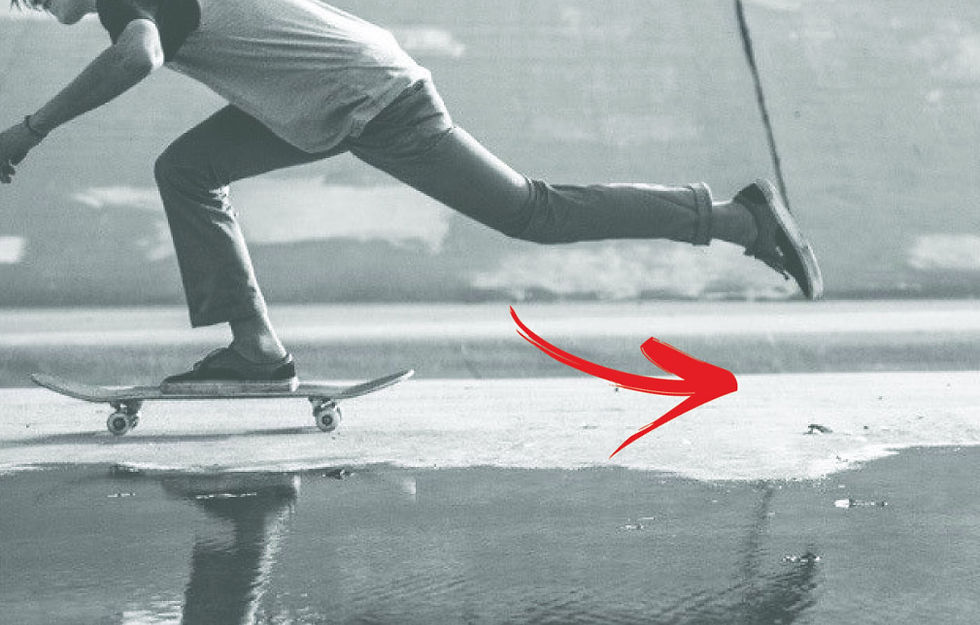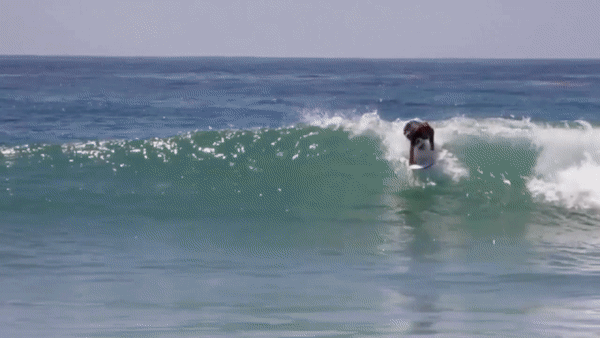Skateboarding Tips: Balance, Turns, Push, and Pop
- Yocaher Admin

- Nov 16, 2017
- 5 min read

Experienced skateboarders make skating look easy. When you first step on a board, though, you soon realize that it’s not so simple. The key to learning to skate like a sponsored skater is to start with the basics. Remember, those guys were once just like you. They just pushed through it.
You can’t learn to run before you can walk, and you can’t learn to kickflip before you learn to ollie. Likewise, learning to ollie requires mastering the basics of skateboarding. Everyone has to learn the fundamentals if they want to skate. Don’t be discouraged if it takes a while to get these moves down. Just skate every day and give it everything you’ve got, and it will soon start to feel as natural as walking.
Push to Get Moving

It might seem smart to learn to do tricks while stationary, doing things like placing your wheels in a crack in the sidewalk to keep the board from moving. The problem is, once you learn to do a trick this way, you still have to learn to do it while rolling. Everything changes once you’re in motion on a skateboard. Using the same body position to do a trick when moving that works when stationary is a good way to end up sprawled on the concrete. Start pushing from the time your wheels first hit the pavement.
First, you need to figure out if you are goofy or regular-footed. Simply put, if you kick a ball with your left foot, you’re goofy-footed. Right-footed skaters are far more common, but in the pro ranks, it’s closer to 50-50. So, don’t be embarrassed if you’re goofy.
Skateboarders push with the dominant foot, placing the other foot directly over the front truck (right on the bolts). Place the toes pointing forward, and push off the ground to get going. You can push several times to go faster, but it’s best to just push once at first. When you get rolling, place the dominant foot near or on the tail and turn the front foot sideways to coast. The front foot will turn back to the toes-forward position every time you push.
Pushing with the non-dominant foot is called pushing mongo. If it sounds like a putdown, that’s because it is. Now, some of the great pros have pushed mongo, but it never looks quite right. Don’t push mongo.
Balance is the Key

When you learn to push and coast, you’ll likely notice that you feel a little wobbly on your board. Pay that no mind. Skateboarding comes naturally to only a rare few. For the rest of us, it takes some time to feel comfortable. Just stay relaxed and loose as you work your way toward faster speeds. It helps to keep the knees a little bent, but being comfortable is most important.
When you can cruise for a short distance, begin learning to steer. To turn left (for a regular-footed skater), put pressure on your heels and lean to tilt the board in that direction. We call this turning frontside because the front of the body faces the direction of the turn. To turn right, put more weight on your toes and lean the board right. This is a backside turn. Make sure you lean your body in the direction you’re turning toward. Practice maintaining your balance as you turn frontside and backside.
If the deck does not seem to want to tilt when you press down, try loosening the kingpin nuts on the trucks. The kingpin is the bolt that runs vertically through the aluminum hanger, and it has a 9/16-inch nyloc nut. Loosening that nut will make the board turn quicker, but it is easy to overdo it. Adjust the nuts on both trucks equally, and keep making corrections until the board turns at a comfortable pace for you. Don’t worry about how tight or loose someone else’s trucks are; everyone has their own preferences when it comes to truck tightness.
Kick Turns are Your Friend
This is where things start to get fun. No matter how loose you keep your trucks, kick turns will always let you make tighter turns. To kick turn, place your back foot on the tail with the front foot over or near the front truck. Press down on the tail and pick the front wheels up off the ground. So, basically do a wheelie. Only, when you have the front wheels up, press down with the back heel or toe to lean the board.
Take care when learning kick turns, though. Without the front truck on the ground, the rear truck is free to tilt as far as it can go. If the wheel bites on the underside of the board, you will stop suddenly and you may get thrown to the ground. Experiment at slower speeds before trying to kick turn when going fast. At a certain speed, kick turns are impractical. They’re a great way to steer at slower speeds, though, and they’re incredibly fun to do on transition.
If kick turns are frustrating you, try learning to tic tac first. This simply means picking up the front truck and moving it to one side before setting it down, then immediately picking it back up and moving it to the other side. The wheels will tick off the pavement as you turn from left to right, making the sound from which the trick gets its name. Once you can tic tac, you’ll likely find kick turns much easier.
It’s all about the Pop
When you can successfully push around and keep your balance, and when you can kick turn without a second thought, it’s time to learn to ollie. This most basic of street tricks is when a skater pops the board’s tail on the ground before sliding the outside of the front foot along the board to level it out. A board can have great pop or it can be mushy, and a skater who can ollie really high is said to have pop. When you’ve felt it, you’ll fall in love with the pop.
To set up for an ollie, get into the coasting position (standing sideways on the board), and position your front foot behind the front truck bolts. The farther toward the center of the board you put your foot, the higher you can ollie, but start with it just behind the bolts to make it easier. Get on the balls of the back foot, and place it directly in the center of the tail. Too much to one side or the other will make the board want to spin when the tail pops.

When you push down on the tail, take all the weight off the front foot. Press down quickly, and pick the back foot up immediately while jumping. The smoother and faster you do this, the more pop you’ll get. As the board rises nose up, use the outside of your shoe to level it out, and suck your knees toward your chest as you do. Once you get the board to level out, reach for the ground by extending your knees. Remember, the ollie is the keystone trick. Almost every other trick in street skating starts with an ollie, so we all have to take the time to learn to do them properly.

Conclusion
It may take one skater six months of daily skating to learn the basics, while another may get it all down in a few weeks of occasional sessions. It honestly doesn’t matter how long it takes. Being able to do waist-high ollies isn’t what makes someone a skater. Trying to do it is all it takes. If you’re skating, you’re part of the family. So, don’t get hung up on how long it takes to learn to kick turn or to ollie. Enjoy the process and embrace the failure that comes with learning. Skateboarding means progressing, and we all do that at our own pace.




Kwin được mệnh danh là thiên đường cá cược với kho game khổng lồ, cung cấp đa dạng thể loại từ cá cược thể thao đến casino trực tuyến, mang đến cho người chơi trải nghiệm thú vị và đầy thử thách.
IWIN là cổng game bài đổi thưởng hợp pháp và uy tín số 1 Việt Nam, thành lập 4/10/2012 với hơn 300 trò chơi gồm nổ hũ, game bài, live casino, cá cược thể thao.